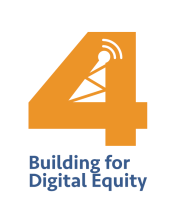Walter Gabino Rendon on Enhancing Digital Navigation with STEM Alliance - Building for Digital Equity Podcast Episode 21

In this episode of the Building for Digital Equity Podcast, Chris speaks with Walter Gabino Rendon, the Chief Program Officer at the STEM Alliance. Walter shares insights into the organization's efforts to bridge the digital divide in Westchester County, New York, a region often perceived as affluent but with significant underserved needs. They discuss the development and implementation of a CRM platform designed to improve the digital navigator experience, streamline client interactions, and collect vital data.
Walter details the collaborative process behind the tech ticketing system, the challenges faced during its development, and its impact on the organization's ability to serve the community effectively. He also shares his journey from education to digital inclusion work, highlighting how the pandemic underscored the critical need for digital access and support.
Tune in to learn about the innovative solutions being deployed to ensure everyone has access to high-speed internet and the necessary digital skills, and how these efforts are being measured and improved continuously.
***Disclaimer: This interview was conducted over a year ago***
This show is 12 minutes long and can be played on this page or using the podcast app of your choice with this feed.
Transcript below.
We want your feedback and suggestions for the show-please e-mail us or leave a comment below.
Listen to other episodes here or see other podcasts from the Institute for Local Self-Reliance here.
Thanks to Joseph McDade for the music. The song is On the Verge and is used per his Free-Use terms.


